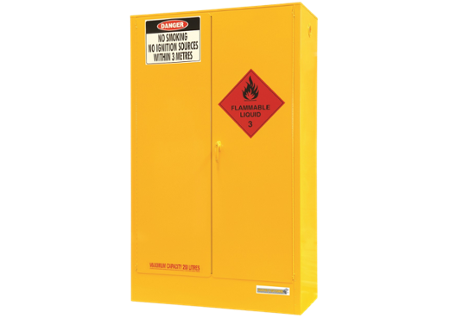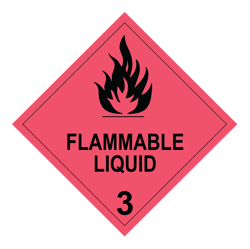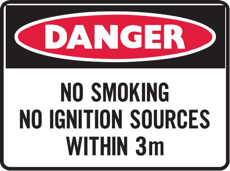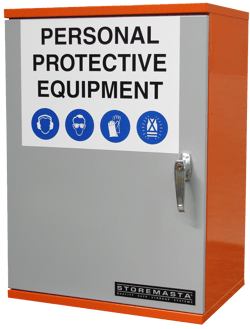Safe storage and handling of hand sanitiser — particularly alcohol-based hand sanitiser — have become increasingly important since the coronavirus (COVID-19) pandemic. A rise in demand for hand sanitiser products has driven the need for more awareness around its manufacture, storage and handling. This guide will step you through the key considerations for managing the health and safety risks associated with these hazardous chemicals.
We’ll also suggest some effective sanitizer storage and handling tips including:
- Understanding the class of sanitiser and its formulation
- Determining the hazards associated with its use
- Understanding your compliance obligations
- Choosing compliant Class 3 storage
- The isolation of ignition sources
- Selecting and maintaining PPE
Let’s get started with first understanding sanitisers, their formulation and hazards.
Sanitiser Classification
Alcohol-based hand sanitisers are classified as flammable liquids according to:
- The Globally Harmonized System of Classification and Labelling of Chemicals (GHS) when stored and used in workplaces
- The Australian Dangerous Goods code (ADG code) when transported
Furthermore, the Therapeutic Goods Association (TGA) developed 3 classes of hand sanitisers to assist manufacturers, suppliers and advertisers of hand sanitisers to comply with their regulatory obligations under therapeutic goods legislation.
The 3 classes of hand sanitisers are:
- General consumer products – these are classified as cosmetics, which include hand sanitisers or antibacterial skin preparations and are not regulated by the TGA
- Therapeutic Goods – these are classified as antibacterial hand hygiene products that must be evaluated by the TGA and included in the Australian Register of Therapeutic Goods (ARTG)
- Sanitisers with one of two specific formulations – these types of hand sanitisers are excluded from TGA regulations for the duration of the COVID-19 pandemic but they must be manufactured according to a strict formula as advised by the World Health Organization (WHO).
What is in Alcohol-Based Hand Sanitiser Formulations?
Alcohol-based hand sanitisers manufactured in accordance with WHO’s specified formulations contain very high proportions of either ethanol or isopropyl alcohol, both of which are considered dangerous goods.
According to the WHO, alcohol-based hand sanitisers have excellent antimicrobial activity against gram-positive and gram-negative vegetative bacteria, and good antimicrobial activity against enveloped viruses, such as COVID-19.
Alcohol-based solutions containing 60 to 80 per cent alcohol are considered to be the most effective hand sanitisers.
REMEMBER: Despite their classification as hazardous chemicals, Hand Hygiene Australia (HHA) recommends the use of alcohol-based handrub products because they are more effective against most bacteria and many viruses than either medicated or non-medicated soaps.
“It has been well established that alcohols effectively reduce the bacterial counts on hands better than soap and water.”
World Health Organization

Effectiveness of different hand hygiene products in reducing bacterial counts after 30 seconds’ use.
What are Our Legal Obligations When Storing Sanitiser?
Under the model Work Health and Safety (WHS) laws developed by Safe Work Australia (SWA), businesses involved in the manufacture, importation, storage or supply of hazardous chemicals, such as alcohol-based sanitiser, must comply with a specific set of requirements as set out in the model WHS Regulations.
If you need help or advice regarding the WHS laws in your jurisdiction, you need to contact your local WHS regulator, such as:
- SafeWork NSW
- WorkSafe Victoria
- Workplace Health & Safety Queensland
Under the WHS laws, if you are a business that manufactures or imports hand sanitiser, you must:
- Ensure, so far as is reasonably practicable, the product is without risks to health and safety, and
- Correctly classify the product, and based on that classification, prepare correct labels and a safety data sheet (SDS) for the product.
You must also manage the risks to health and safety when handling and storing hand sanitiser.
Like to learn more about the indoor storage of flammable liquids?
What are the Hazards?
Both ethyl alcohol (ethanol) and isopropyl alcohol (isopropanol) are classified as hazardous chemicals because they are flammable liquids. As alcohol-based hand sanitiser products contain one of these ingredients, they present a fire hazard and have the potential to harm people and damage property.
Ethanol and isopropanol can also cause severe eye irritation.
Alcohol-based hand sanitisers can also contain other ingredients that are classified as dangerous goods, such as hydrogen peroxide — an oxidiser that is corrosive, with the potential to harm the skin and eyes.
GHS and ADG Classifications: Isopropanol and Ethanol Solution Sanitiser
| Sanitiser Formulation | Isopropanol (isopropyl alcohol) | Ethanol solution (95% ethyl alcohol |
|---|---|---|
| Flash Point | 14 degrees Celsius | 13 degrees Celsius |
| UN Number | 1219 | 1170 |
| GHS Category | 2 | 2 |
| GHS Pictogram |  |
 |
| GHS Signal Word | Danger | Danger |
| GHS Hazard Statements | Highly flammable liquid and vapour | Highly flammable liquid and vapour |
| ADG Class & Packing Group (PG) | Class 3 PG II | Class 3 PG II |
| ADG Class Label |  |
 |
To further illustrate these dangers, we’ll discuss an alert which was issued by the International Association of Oil & Gas Production (IOGP).
The IOGP issued the alert which highlighted the hazards associated with hand sanitiser, due to a worker’s hand catching on fire when static electricity from metal ignited the sanitiser.
The alert mentioned that the product must have sufficient time to completely dry or evaporate before hands come into proximity with a potential source of ignition.
Alcohol vapours from hand sanitiser products may be invisible, but they are also highly flammable.
IMPORTANT: In May 2020, an American fire department issued a warning that alcohol-based hand sanitiser left in a hot car had the potential to ignite and cause a fire inside the vehicle (assuming the product was in clear packaging and exposed to direct sunlight).
How to Handle and Store Sanitiser
Any business involved in the storage of alcohol-based hand sanitiser product must consider the risks of fire and explosion, as well as the potential for spillage and human harm.
Undertaking a dangerous goods assessment, before putting the appropriate risk controls in place, is the most effective way of:
- Identifying and managing those risks
- Ensuring compliance with WHS laws in your jurisdiction
- Implementing the most cost-effective storage options
How to Store Flammable Liquids
AS 1940:2017 is the Standard which provides technical guidance related to the storage and handling of flammable and combustible liquids, such as alcohol-based sanitiser.
The Standard covers in detail the following key storage considerations:
- Design safety and suitability of store
- Ignition sources
- Emergency provisions
- Minimisation of vapour hazards
- Separation distances
We’ll now look at these key points in further detail below.
Install Compliant Sanitiser Storage Cabinets
Ensure the safe and secure storage of your stocks of alcohol-based sanitiser and other flammable liquids by using only flammable liquids cabinets designed and manufactured to comply with AS 1940:2017 - The storage and handling of flammable and combustible liquids.
IMPORTANT: The STOREMASTA range of flammable liquids cabinets meet the requirements of AS 1940:2017 and will help reduce your financial liability due to non-compliance.
Due to the flammable nature of the vapours emitted by alcohol-based sanitisers, anyone who manufactures or stores alcohol-based sanitisers or their raw ingredients is obligated to control the risks of fire and explosion.
Potential ignition sources are diverse, including:
- Naked flame (including pilot lights and cigarette lighters)
- Smoking
- Static electricity (especially in very low humidity environments)
- Any form of sparks (such as welding activity)
- Hot surfaces of vehicles or plant equipment
- Portable electrical equipment (such as tools, radios, and fans)
- Fixed electrical equipment (including power sockets and wiring)
Even a relatively small amount of flammable liquid being transferred can generate a static electrical discharge. If flammable vapours are present, a fire or explosion is an all too possible consequence.
This is why correctly storing flammable liquids, such as alcohol-based sanitiser and its raw ingredients, is a crucial part of risk management in the workplace.
Install Adequate Dangerous Goods Signage
Ensure your people and any visitors are aware of the location and nature of any flammable liquids being stored on site. Installing the appropriate dangerous goods diamond and hazard signage is a crucial element of the overall strategy of managing the risks associated with storing hazardous chemicals such as sanitiser in the workplace.
Maintain a Hazardous Chemicals Spill Kit
Storing Class 3 Flammable Liquids within the workplace requires an Australian Standard-compliant spill containment system. We suggest keeping chemical spill kits in key locations onsite, to contain and clean-up any hand sanitiser spills.
DID YOU KNOW: Our Australian-made spill kits come in a variety of sizes and are designed to fit into vehicle boots, equipment cabins and other workplace scenarios.
How to Handle Flammable Liquids
When working with sanitisers, and other flammable substances, it’s crucial that staff have the personal protective equipment (PPE), handling equipment and training to be able to navigate the hazards associated with the chemical. We’ll look at a couple of simple things that you can do to increase safety in your handling operations.
Provide PPE and Suitable PPE Storage Cabinets
AS 1940:2017 mandates the provision of Personal Protective Equipment (PPE) in areas where flammable liquids are used. The PPE must be suitable for the chemical that your staff are handling, such as gloves, eyewear and protective clothing.
You must also ensure that you’re maintaining your PPE, so there is no risk of staff coming into contact with chemical residue.
We suggest using a well-stocked PPE storage cabinet that’s placed in strategic locations across your organisation. By safely storing your personal protective equipment after use and laundering, you will ensure your staff can quickly access the PPE when handling hazardous substances.
Keep Containers Secured with Lids
When using or transporting your chemicals around the worksite, it’s important that the containers you’re using are chemically compatible with your substances. Sanitiser should always be kept in compliant containers, that are loaded and stacked neatly into secure storage when not in use.
Due to the emission of flammable vapours, it’s important that vapour emissions are controlled when handling these substances.
Work in Well Ventilated Areas
Packages should only be opened or decanted in work areas that offer adequate ventilation. This is not only to reduce the risk of human harm, but to minimise the likelihood of flammable vapours building up in an area. You must also identify and isolate ignition sources from any handling or transfer areas, just as you would when considering your flammable liquids storage.
Storing Large Quantities of Sanitiser
Under WHS Regulations, once the quantity of a hazardous chemical such as sanitiser exceeds a specified threshold amount, you are required to:
- Placard the workplace,
- Prepare a manifest, and
- Notify the regulator
Placards
Placards are specific signs required at some workplaces under WHS laws. You need to display placards when storing hazardous chemicals above the placard quantities listed in the Placard and manifest requirements under the model WHS Regulations, or when storing hazardous chemical in bulk (inside containers holding more than 500L/Kg).
For GHS Category 2 / ADG Class 3 PG II Flammable Liquids such as ethanol and isopropanol, the placard threshold quantity is 250L.
IMPORTANT: Placarding requirements are set out in Schedule 13 to the model WHS Regulations.
Manifest
A manifest is a written summary of hazardous chemicals with physical and acute toxicity hazards that are used, handled or stored at the workplace.
Manifests are only required where hazardous chemicals such as flammable liquids present at a workplace exceed the specified manifest threshold quantities. A manifest is mainly for emergency services when they respond to a workplace emergency such as a fire or chemical spill involving flammable liquids.
For GHS Category 2 / ADG Class 3 PG II Flammable Liquids such as ethanol and isopropanol, the manifest threshold quantity is 2,500L.
IMPORTANT: Manifest requirements are set out in Schedule 12 to the model WHS Regulations.
How to Store Manifests and SDS
Manifests and the relevant Safety Data Sheets (SDS) required to satisfy SWA’s chemical storage checklist should be safely and securely stored in a waterproof red Hazmat Box and SDS storage box, respectively.
Regulator
If the quantity of sanitiser exceeds the manifest threshold quantity, you are required to give written notice to the regulator in your state or territory. Click here to find your local regulator via the Safe Work Australia website.
Learn More About the Safe Storage of Sanitizer
A safer workplace starts with the correct controls. And we have an eBook that can help. Access our latest eBook The Ultimate DG Storage Handbook, to learn more about hazardous chemicals, risk assessments, storage, handling and much more.
Joining the team as a Dangerous Goods Storage Consultant, Melissa Hampton became Storemasta's Marketing Manager in late 2021. With extensive knowledge and experience in chemical compliance, Melissa is responsible for leading the Marketing team and helping shape their marketing strategy. In her spare time, you can find Melissa hiking, swimming and enjoying the great outdoors in beautiful north-west Tasmania.




